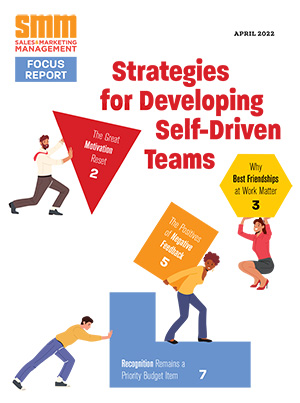For many B2B organizations, summer is an important mid-year turning point – a time to assess sales success, look toward meeting end-of-year goals, and/or plan for your new year. As social selling takes on greater importance in the sales process, organizations – including marketers, trainers and sales enablement professionals – can use the summer months to help sales teams get savvy about social selling, and lay the groundwork for strong sales, whether you’re wrapping up the year or gearing up for the new year.
Research shows it’s critical to be social: According to IDC’s Social Buying Study, 75 percent of B2B buyers and 84 percent of C-level/vice president executives use social media to support purchasing decisions. In addition, LinkedIn finds that sales reps employing social selling are 51 percent more likely to exceed quota. More than ever, organizations – and their marketing, training and sales enablement teams – need to provide guidance and support to help reps advance their knowledge of social media and social selling tools.
Consider the following six tips to get your sales teams ramped up on social selling this summer (or anytime of the year, for that matter):
1.Identify your buyer’s watering holes. As a first step, determine which social channels are being used by your target buyers for business research. If they don’t spend much time on LinkedIn then sales reps shouldn’t be there. Persona research can help you answer this question, and will ensure that the time sales reps spend on social selling will be optimized to reach their target buyers.
2. Start a pilot group. Kick-start or enhance your social selling efforts by starting a dialog with the sales organization. Create a pilot group of your top four or five socially savvy reps to learn what strategies they’re using, validate the watering holes, what works for them, the challenges they face and the tools they’d like to be using (or wish existed). Use their insights and experiences to develop a blueprint for getting reps on board with social selling.
3. Build reps’ online presence. Help your reps create strong profiles on LinkedIn, Twitter and the other preferred social media channels you discovered in step 1 so they can connect more effectively with target buyers. Set up one-on-one sessions to provide the hands-on help they need to either get started or perform better. Be sure to provide suggested templates and language they can use to quickly make their profiles stand out (and showcase their individuality), while also ensuring they stay on message about your company and its offerings.
4. Create sales-specific best practices. The “social media guidelines” that many organizations circulate tend to provide more details on what not to do, rather than concrete advice on how to successfully engage with social media. Take the time to provide more constructive, sales-specific best practices that will help reps get comfortable with social selling – rather than scare them away. For some reps, social media may be entirely new. Teach them how to listen first, then dip their toe in the water by sharing content. Provide step-by-step instructions on what LinkedIn groups they should join; examples of how to participate in discussions; and tips for how to identify, organize and manage the buyers and organizations they follow.
5. Make it easy to share social content. Content is the fuel that drives sales conversations. While many organizations have developed compelling content for their corporate blog and other social channels, it often isn’t being effectively promoted or used by sales teams. Take stock of the content that exists in your organization and then establish a process for packaging and disseminating it to reps in a way that is easy for them to share with customers and prospects.
6. Make a business case for social selling. While reps may understand the importance of social selling, for many, it remains in the realm of the abstract. To get reps on board, try focusing less on technology tools and their particulars, and more on the overall value they bring. Take the time to create and publicize internal case studies of reps who have successfully used social selling to uncover new opportunities and close deals. By highlighting their proven successes, even the social media luddites will realize they need to get on board.
In the end, social selling is still selling and selling has always been social. Reps should know that they can combine their selling skills with social tools to reach their buyers where they are, not just on the golf course, and achieve great success.
Robin Saitz oversees all marketing strategy and initiatives at Brainshark, a provider of SaaS-based sales enablement solutions. For more information and tips on how to improve sales performance, visit the Brainshark Ideas Blog at http://www.brainshark.com/ideas-blog.


